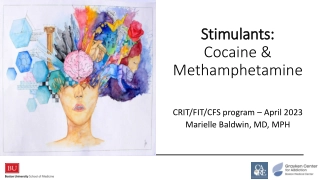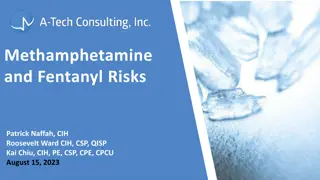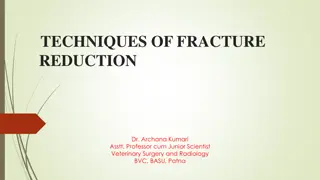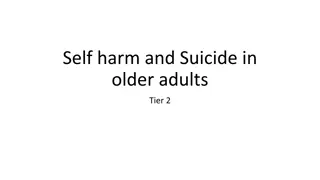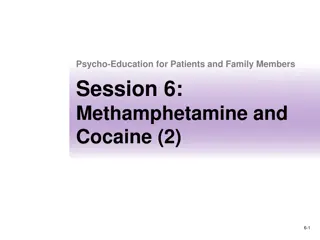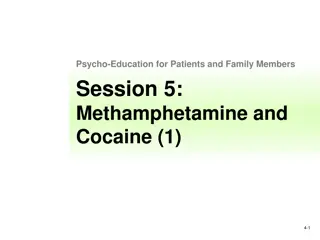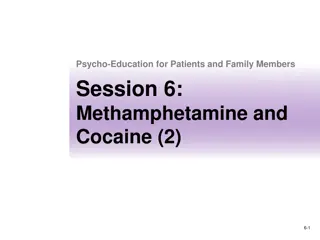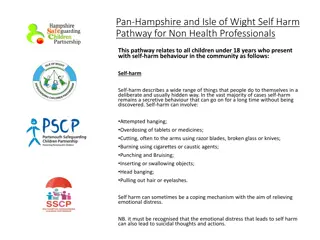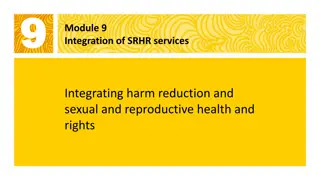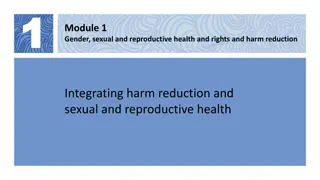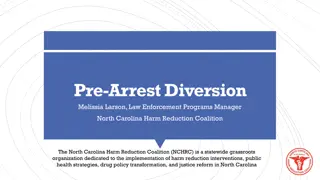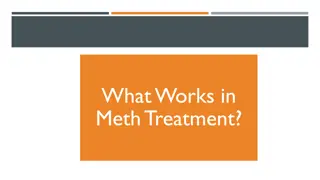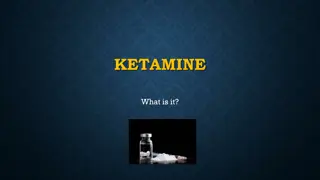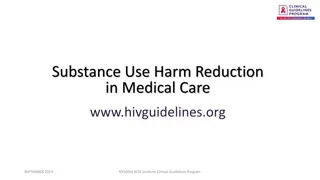Understanding Methamphetamine: Effects, Risks, and Harm Reduction
Methamphetamine, also known as meth, crystal meth, or ice, is a potent central nervous system stimulant with short-term effects like euphoria and rapid breathing and long-term risks such as tooth decay and psychosis. This drug is addictive and carries various health hazards, including overdose and HIV transmission through needle sharing. Harm reduction strategies include safe use practices and avoiding mixing with other substances. Treatment options are available for individuals looking to overcome methamphetamine addiction.
Download Presentation

Please find below an Image/Link to download the presentation.
The content on the website is provided AS IS for your information and personal use only. It may not be sold, licensed, or shared on other websites without obtaining consent from the author. Download presentation by click this link. If you encounter any issues during the download, it is possible that the publisher has removed the file from their server.
E N D
Presentation Transcript
METHAMPHETAMINE What is it?
METHAMPHETAMINES Also called meth, crystal meth, Tina, ice, glass, Christal, Christy, yaba, chalk, zip and crank. It is a central nervous stimulant, referred to as an upper similar to speed. It is white, odourless and tastes bitter. It comes in rocks, crystals or tablets which can be dissolved in water or alcohol. It can be smoked, injected, snorted or swallowed. The effects can last from 4 12 hours depending on how it is taken.
SHORT-TERM EFFECTS An intense rush. Small amounts can make someone feel energised, euphoric, aroused and more active. Rapid breathing. Loss of appetite. May experience nausea. May experience panic attacks, jaw clenching and compulsive repetitive behaviour.
LONG-TERM EFFECTS Tooth decay is a common feature leading to what is referred to as meth mouth. Paranoia and hallucinations. Psychosis can develop. Violent and aggressive behaviour. Overdosing is possible and can cause liver, kidney and stomach disorders, stroke, coma and death. Sharing needles increases the risk of contracting HIV and Hep C. Increased libido can lead to risky sexual behaviour resulting in pregnancy or STI s. Damage to the nerve tissue (neurotoxicity) leading to loss of memory and concentration.
OTHER RISKS It is not recommended in pregnancy as not enough is known about harms to baby. It is physically and psychologically addictive. Higher doses and more required to maintain the feeling. Requires weaning off due to physical addiction. Withdrawals include cravings, depression and anxiety. It typically stays in the system up to three days, but this varies based on consumption, frequency of use and metabolism and a person s medical condition.
HARM REDUCTION Try to use in a safe place with trusted people. Try to eat before using. Avoid sharing needles. Always carry condoms. Avoid taking with other drugs/alcohol. Note: Methamphetamine is not speed. While they have similar effects, speed can be referred to as amphetamine, can be legally prescribed and is typically less potent than methamphetamine.
TREATMENT Many treatments are available if you or someone you know wishes to wean off taking meth. If you think someone is overdosing, seek medical help. Put the person in the recovery position or on their side and stay with the person until help arrives. Contact your GP Services map: https://www.drugsandalcohol.ie/services_map www.drugs.ie cris@mqi.ie tiglin.ie livinglifecounselling.com
SOURCES/REFERENCES HSE drugs.ie (n.d.) Methamphetamine. https://www.drugs.ie/drugtypes/drug/methamphetamine_stimulant_hallucinogen [Accessed on 05/01/24] Images free to use and share commercially: Google.ie For more information follow the link below; HRB National Drugs Library (2024) Drugs and alcohol factsheets


